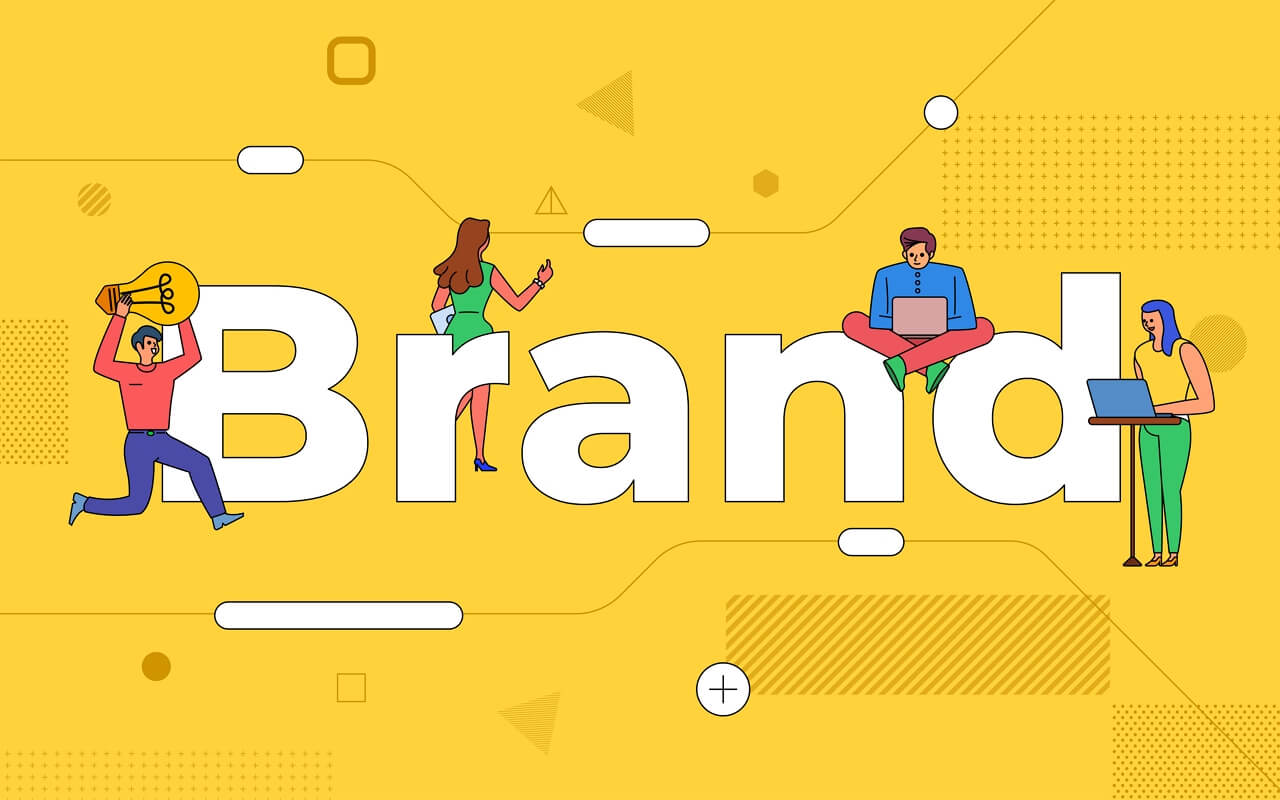
In a world filled with many brands, survival in the market and obtaining the largest share of it depends on the ability of each company to manage its own brand. It is clear that achieving all the ideal conditions for creating an exciting brand is no longer enough, but then requires systematic management of that brand to achieve growth and persuade more consumers to turn to it.
What is brand management?
Brand management is the set of processes that contribute to creating a brand's value and identity, transferring it to the public, building awareness of that brand, and enhancing customer loyalty over time. Just as companies are created first and then managed, a brand is built first and then it needs to be managed. To continue to be in front of customers, regardless of the company's market value and reputation. Before jumping into the basics of brand management, you should first know what brand origins mean.
Brand assets
The term brand assets refer to its nominal value in the market and include the components that the public can see and interact with such as brand name, logo, colors, advertising persona, packaging, marketing channels, and other determinants that vary based on what the company offers and how to submit it.
The higher the brand's asset value, the more willing customers are to pay for your products or services. The nominal value of the brand is described as an asset since it can be profitable or losing, depending on the effect of the brand on consumers whether through benefiting them or causing them to dissatisfy and lose.
The first goal of brand management is to enhance its assets in the market and turn them into profitable assets. Often, most companies compete to control a higher value within the market so that their product is the largest acquirer. To understand the matter, let's look at the following example, a person is looking for a fast sports car to buy, so what are the expected first answers that will knock on his ear? Lamborghini is not it! Here comes the second question, why a Lamborghini and not a Mercedes?
Now the answer is, customers looking for a sporty and fast car are more willing to pay for a Lamborghini, while customers looking for comfort go for Mercedes! Therefore, when a car company launches a new advertising campaign, it does not claim to be superior to all the features; This is because its brand assets have a certain value offered to a dedicated audience. The result is that customers' decisions are affected by these differences when going to pay for a particular product.
A customer who wants to buy a fast and sports car pays a huge amount of money to buy a Lamborghini, even though Mercedes produces sports and fast cars. But when he went to buy, he aimed his target at the company whose brand had more valuable assets in the world of fast cars!
Fundamentals of Brand Management
The basics of brand management are the first steps to achieving successful brand management and expanding market share. It is important for business owners and marketers to be aware of it, as its importance is that it precedes the development of appropriate strategies to achieve growth goals, and those basics are as follows.
1. Brand awareness
Brand awareness is the first step to achieving its management component. It is the knowledge that consumers have about the brand, so no one will go to buy a product that they do not know anything about. To spread awareness of a brand, it is necessary to define its distinctive characteristics. Does it have a specific size and color? What is its nature? Is it a drink? Natural drink or energy drink? Simply put, the customer must know all the information about the product they are buying to be aware of it.
2. Brand awareness
Brand awareness is the ability of a customer to recognize it just by seeing its name, logo, or product. This realization keeps the brand always present in the minds of the masses so that it becomes their priority when they turn to the purchase process.
Brand awareness is different from brand awareness. For example, awareness of Coca-Cola products is recognizing their taste, price, and sizes, while awareness of Coca-Cola means that the customer recognizes them once they see the logo in an advertisement, for example. Here comes the importance of designing a strong logo that contributes to creating a permanent visual connection between the brand and the audience.
3. Brand value
Brand value is the perception that consumers have of a brand based on their experiences or fantasies about it. The higher that value is, the company owners will be able to raise the prices of their products, until the matter shifts from selling a product only to selling a product and a brand name. Starbucks is certainly a famous example of this.
So how do you enhance brand value? Providing a quality product is definitely the first factor. In addition to paying attention to improving the customer's experience, and providing features that benefit him and attract him to buy the brand's products. For example, Starbucks offers free internet and an environment to get things done. The customer then not only gets a cup of coffee but also gets his work done and can form relationships and interact with people.
4. Brand loyalty
Brand loyalty is formed when customers continue to buy and engage with its products. It is one of the most powerful goals that companies seek to enhance their profits. A repeat customer costs much less than trying to attract a new customer and spends more money because they trust the brand.
There are many programs to gain customer loyalty, whether by using point systems, offers, and other means, but all of them ultimately aim to make the customer a frequent visitor to the products.
5. Brand Reputation
Many companies are subject to criticism and others are praised, and the greater proportion of the two matters constitute the reputation of the brand. Companies that are constantly criticized are known to have a bad reputation among the public, and vice versa. Brand reputation affects the impressions that consumers have on the brand when they are exposed to it for the first time.
This reputation is developed by improving the quality of services provided by the company and reducing problems as much as possible. The company's customer service is also among the front lines that affect its reputation, and the better it is at solving customer problems and listening to them, the better the company's reputation.
How does brand management affect your company's results?

Few companies can apply brand management strategies properly. This explains why most major companies control a huge share of the market without even owning a website or launching advertising campaigns with huge amounts of money. So how can brand management affect corporate results?
Brand recognition
For the competition, large brands can emerge with almost identical market shares. For each sign to distinguish itself, it must have a special impact on the masses. By successfully managing the brand, brands can enhance awareness of it and make it easier for consumers to understand it. This makes it easier for customers to distinguish them from other brands.
Competition in crowded markets
Getting a foothold in a market full of competitors can seem impossible. But the seasoned entrepreneur knows very well what to do in this case, which is to search for a competitive advantage, that is, to know the needs that can be presented to customers differently from those companies, and to build his audience around it. Here comes the role of brand management by putting those advantages at the forefront, in this way only it is possible to grow in crowded markets.
gain confidence
Many young entrepreneurs who have launched new online stores note that most customers stop at the checkout process. That is, the customer searches for the product, add it to the shopping cart, goes to the payment page, and then leaves. What happens in this case?
The reason revolves around the customer’s confidence in the online store, although he may be holding an online payment card and about to pay, he is thinking in his mind “Why should I buy it from this store and not from Souq.com or Amazon?”; It's up to the customer's trust in the big brands whose reliability is higher than others.
Speed up purchases
Customers go through several successive stages before they decide to make a purchase. Starting from brand awareness and recognition, all the way to testing its reliability. For brands that are still young or have not yet gained traction, their customers will face these stages every time someone decides to buy products. However, by achieving the previous conditions - which are the basics of brand management - the consumer quickly bypasses these stages and proceeds to the payment process directly, which speeds up purchases.
Drive customers to spend more
It's easier for customers to buy multiple products from a famous brand than to test the new one! Customers feel comfortable with the brands they have tried or that have a good reputation and reliability in the markets. This motivates them to spend more money without the fear that these products will nhiringhiringnger suit them.
Reduce costs
In the beginning, companies spend huge amounts of money on marketing and hiring a large team of employees, to build the right audience. After that, the most important feature of building a successful brand is to increase its attraction to customers with its large size, that is, it becomes magnetic, and thus the costs of marketing campaigns are reduced compared to profits.
And do not forget that customers do not stop talking to each other, and for companies whose brand accounts for a huge share, the consumer is a customer and a marketer at the same time.
Staff retention
The employee retention feature may sound a bit strange here, but having a strong brand contributes to employee loyalty as much as it contributes to increasing customer loyalty. The more loyal employees there are, the more productive the company will be. Where a loyal employee works with an efficiency that may reach many times the efficiency of employees who are still in the middle of the road, which is what every company definitely wants.
But the loss of the company's employees is costing it dearly. Because of the training costs you spent to develop their skills, along with the other costs that HR people spend looking for other employees.

